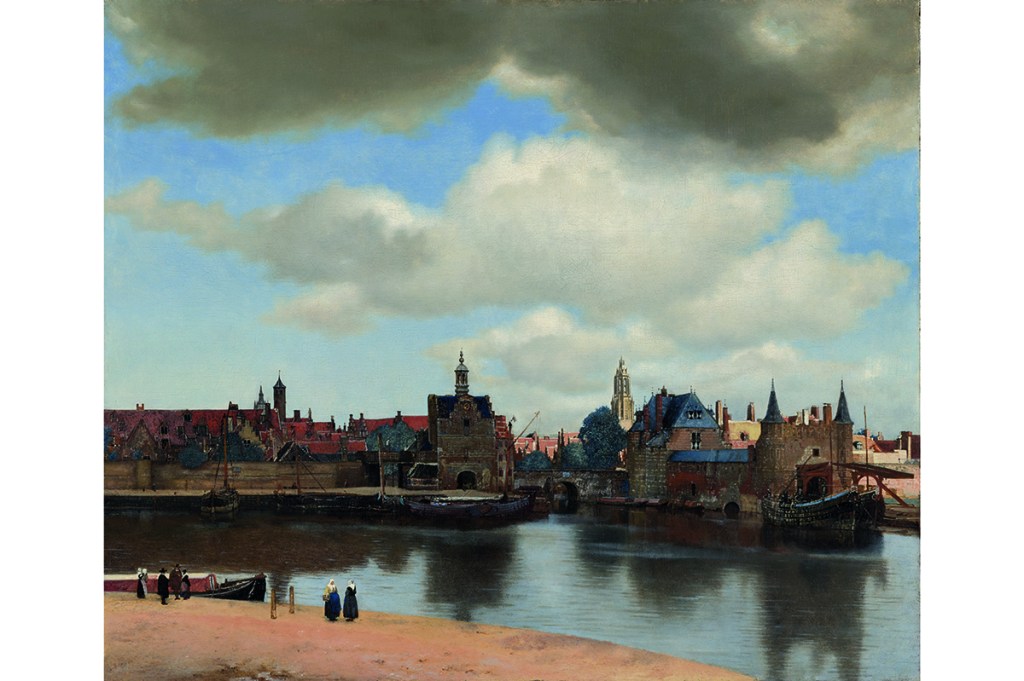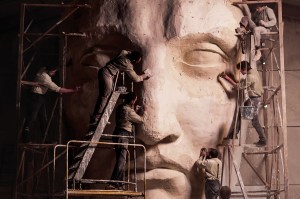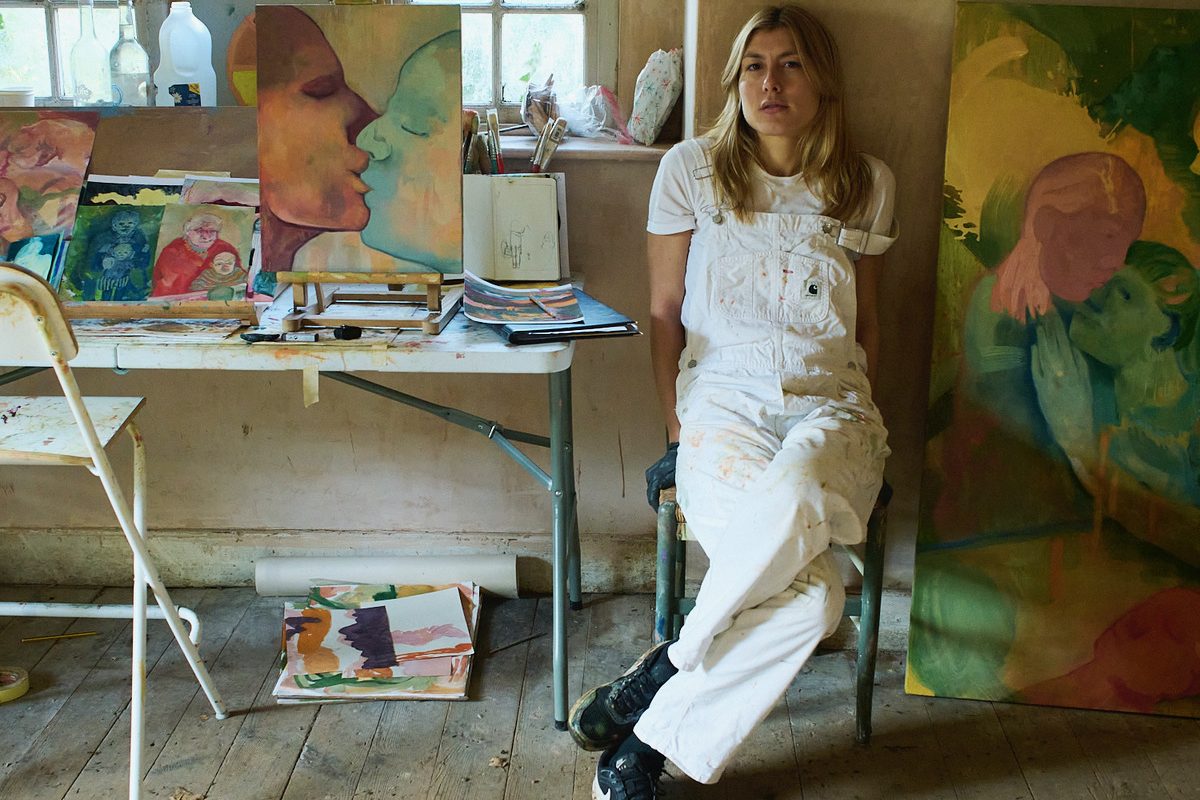Why is it that the world of critics, gallery-goers and painting-lovers is so overwhelmingly enthralled by Johannes Vermeer? His subjects — quiet interior scenes with women writing letters or playing music — are hardly the stuff of radical innovation or surprise. He wasn’t even that original: his works often have a similar focus to those by his contemporaries from the Dutch Golden Age, from Pieter de Hooch to Jan Verkolje. Nor is his biography the perfect fodder for endless books and feverish interest. So little is known about the man, and his way of painting, that the moniker he was given by the French art critic Théophile Thoré-Bürger in the nineteenth century — “the sphinx of Delft” — is still used today to imply his inscrutability, his opacity and his ambiguity.
Nonetheless, there is no question of the strength of his appeal: just two days after the blockbuster new exhibition opened at Amsterdam’s Rijksmuseum in February, the museum had to report that it had sold all 450,000 tickets for the remainder of the show’s run. The tickets would have sold even faster had the website not crashed under the weight of demand. (The museum has promised updates on future availability.)
Vermeer was born in Delft in 1632 and died there in 1675 — having moved only a matter of meters from his birthplace to the house in which he died, penniless, leaving behind a wife and eleven children. For all his provincial penury (upon his death, his widow Catharina Bolnes had to pay the family’s bakery debts in paintings), the Dutch artist is now the recipient of unprecedented international fame. His tremendously small output — it is estimated he only made sixty works, of which thirty-six are now known — is scattered all over the world, from Tokyo’s National Museum of Western Art to the Frick Collection in New York. Now, for the first time since the 1996 exhibition at the Mauritshuis in The Hague, Vermeer’s paintings have been flown across the globe to be reunited in a retrospective. Spread over ten galleries in the Rijksmuseum are no fewer than twenty-eight of his works. Only eight known works were too fragile — or, in the case of one painting, too politically contested — to travel.
For many, there is something rather provocative and disingenuous about asking why Vermeer is so revered. From a 2008 song by the proto-punk singer-songwriter by Jonathan Richman (“Vermeer was eerie, Vermeer was strange, Vermeer had a warm modern color range”) to essays by the master Marxist art critic John Berger (Vermeer is one of a few “exceptions of a very special kind”; “In front of a Vermeer… we become aware of the flow of time itself”), everyone simply knows: he far surpasses his peers at rendering reality and perspective, and when presented with this vision of reality, the viewer has a numinous, philosophical experience.
In the new exhibition, the curators go some way to explaining the brilliance of the artist — and getting beneath the hackneyed praise and awe of the centuries since his death. Arranged thematically, rather than chronologically, the exhibition opens with two views of his hometown, Delft. The first, “View of Delft” (1660-61), presents the city from a distance: Vermeer shows it looming on the other side of the glassy main canal at its outskirts, with a boat at the bank and people preparing to cross. The other, “The Little Street” (1658-59), is a close-up view of the facade of a canal-side house. One woman sits at the open door, intent on the sewing on her lap; she has moved to the door to seek the light. Another woman is stooped over, working, in the open courtyard. Two children are playing under the bench at the front.
The seeming difference between the two views — the zoomed-out, and the minutely zoomed-in — is crucial to the exhibition. Vermeer’s art is about looking, about considering what he has painted, and questioning what it is you see. How, despite the implied distance and the small scale of the people in the foreground, does Vermeer paint the individual bricks and tile patterns on the buildings on the other side of the canal? And, in The Little Street, why are the cobbles visible from a birds-eye view? Is the viewer parallel to the facade, or elevated above it? With Vermeer, the act of looking – of being the viewer, the painting’s completion — is never simple.
After a room featuring Vermeer’s early painting apprenticeship — his religious work, “Christ in the House of Mary and Martha” (1654-55), and the dubiously-attributed “Saint Praxedis” (1655), sit alongside his version of an ancient theme, “Diana and her Nymphs” (1655-56) — the exhibition reaches the Vermeer his fans know and love. Women reading letters at windows, their faces only illuminated by the blank, uniform glow of a light source on the left. Women sitting with men: the colors of their dresses, the movement of their hands and the intensity of their gaze making them always, without fail, the more interesting subject. Not portraits, but “tronies” (paintings of individual interesting faces rather than commissioned likenesses) of women in outrageously expensive clothes and jewelry. The intense, intimate domesticity — which is always on the boundary of the outside world, through letters, maps on the wall, or the entrance of men who refuse to take off their hats or coats — is on full, glorious display.
But, when one is presented with a glut of Vermeers, rather than the normal diet of one or two encountered in scattered collections, something else emerges. From the different approaches to looking and viewing shown in the two Delft paintings, the exhibition moves to “Girl Reading a Letter at an Open Window.” Painted in 1657-58 — just after his religious work and the bawdy scene of “The Procuress” (1656) — it shows a girl standing in front of a window on the left side of the canvas. The window is only visible because a dark-red curtain has been pulled away to let the light in; the scene is only visible because a dark green curtain in the foreground has been pulled all the way to the right (in an absolute travesty of framing, or of restoration, the curtain rail is not visible in this exhibition). Vermeer has removed these two obstructions, but he has left reminders: this is a painting about looking, about entering the room with our eyes, and he does not let anyone forget it.
Just as the woman is staring at the letter, her own face is reflected — in meticulous detail — on the window. If this dance of seeing and being seen wasn’t enough, conservators have recently uncovered something underneath the blankness of the wall behind the girl: a portrait of Cupid painted over by some meddling later artist. Now uncovered, he stares directly out with an almost lecherous intent. This is a painting about desire, about watching, about lusting through looking.
This focus on gazes, glances and the act of viewing continues throughout the exhibition. The perfect single-point perspective of “The Milkmaid” (1658-59) — the pinprick vanishing point Vermeer marked above her right shoulder is visible — is as much about technical finesse as about drawing in the viewer’s eye. In “Young Woman with a Lute” (1662-64), the musician stares out at the bright window with a vacant smile. Combined with the map in the background, Vermeer seems to be begging his viewers to consider what it is they are seeing: a fleeting moment in a domestic scene, or the beginning of some journey, some trip beyond the window?
It’s distinctly disappointing that Vermeer’s premier painting about the act of being observed and of observing — “The Painter in his Studio” (1666-68) — was deemed too fragile to travel from its home in Vienna (its “fragility” has been cited as a reason for it to remain in Austria since a restitution case about its 1940 purchase by Hitler came to court in 2011).
This delight in analyzing Vermeer’s art — in guessing where he wants his viewer’s eye to be drawn — is made possible by the sheer profusion of paintings on show. But at the same time, a one-artist retrospective runs the risk of removing the painter from history, making him an exception who so far supersedes his contemporaries that he cannot be described, or understood, in the same terms. The Rijksmuseum exhibition does little to counteract this tendency but just forty miles south of Amsterdam is a rather different show. In the Museum Prinsenhof — a stone’s throw from the church where Vermeer is buried — is Vermeer’s Delft. The exhibition holds none of the artist’s own paintings, but it does show his contemporaries — their interior scenes, attempts at perspective and control over light — alongside Delft stoneware, archival materials and explanation of optical lenses and techniques. By no means as dramatic as the Rijksmuseum exhibition, this show is quieter, subtler, the museum equivalent of being inside one of Vermeer’s scenes. When added to a trip to Amsterdam — if you can come by the tickets — this is a once-in-a-generation combination.
Vermeer’s Delft, in the Museum Prinsenhof in Delft, runs through June 4, 2023, as does the exhibition in Amsterdam at the Rijksmuseum. This article was originally published in The Spectator’s April 2023 World edition.

























